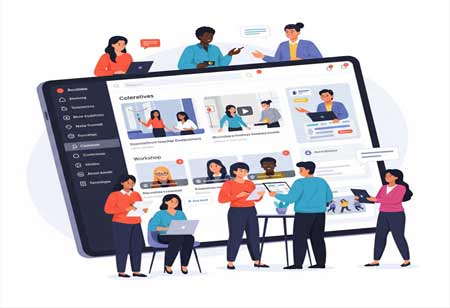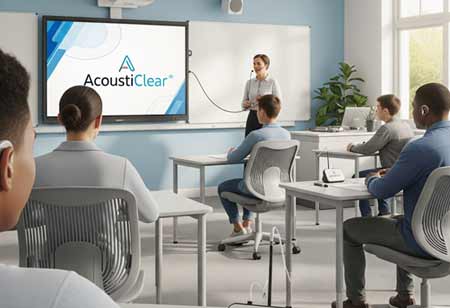THANK YOU FOR SUBSCRIBING
Be first to read the latest tech news, Industry Leader's Insights, and CIO interviews of medium and large enterprises exclusively from Education Technology Insights
Navigating the Hurdles of Virtual Learning
The issues posed by the virtual classroom are distinct and need thoughtful analysis and practical solutions.

By
Education Technology Insights | Thursday, November 20, 2025
Stay ahead of the industry with exclusive feature stories on the top companies, expert insights and the latest news delivered straight to your inbox. Subscribe today.
The issues posed by the virtual classroom are distinct and need thoughtful analysis and practical solutions.
Fremont, CA: Achieving a truly successful and engaging online education requires proactive involvement from parents, teachers, and students alike. Acknowledging and addressing the challenges inherent in this mode of learning is essential. By fostering open communication and collaboration, we can create a supportive environment that not only enhances academic performance but also nurtures each student's emotional and social development. When all stakeholders are committed to this goal, we unlock the full potential of online education, making learning a rewarding experience for everyone involved.
Technical Difficulties
Managing technological issues is one of the most frequent problems in the virtual classroom. Hardware failures, software bugs, and bad internet access are just a few of the problems that can impede learning and irritate both teachers and students. It is crucial to have trustworthy technical support and make sure that everyone involved has access to the tools and resources they need in order to lessen these problems. To acquaint pupils with the online platforms, teachers can also conduct practice sessions and offer troubleshooting advice.
Lack of Face-to-Face Interaction
Students may feel alone and disengaged in virtual classes due to the lack of in-person connection. The virtual setting frequently restricts impromptu conversation, in contrast to traditional classrooms, where students can readily engage with their teachers and peers. Teachers can address this by implementing interactive features like video conferencing, breakout spaces, and group discussions to promote a feeling of community. Creating chances for social connection and promoting consistent engagement might also aid in closing the gap.
Distractions at Home
Due to the numerous distractions that can divert pupils' attention, learning from home can be difficult. Learning might be hampered by family members, personal electronics, and household tasks. Students should designate a specific, interruption-free learning area to reduce distractions. Maintaining attention and productivity can also be facilitated by creating clear boundaries with family members and adhering to a regular schedule.
Maintaining Student Engagement
It can be challenging to maintain student engagement in a virtual classroom, particularly when they are not physically there. Reduced motivation and involvement may result from an unstructured setting. By employing a range of captivating teaching strategies, including interactive multimedia content, tests, and gamified learning exercises, educators may counteract this. Regularly giving comments and praising students' work can help increase their motivation and level of participation.
Assessment and Evaluation
Assessing students' progress and performance in a virtual classroom poses unique challenges. Traditional methods of evaluation, such as in-person exams and hands-on activities, may not be feasible online. Educators need to adopt alternative assessment strategies, such as open-book tests, project-based assessments, and digital portfolios.
Teacher Preparedness
Transitioning to virtual teaching requires educators to adapt their teaching methods and develop new skills. Lack of training and experience with online platforms can hinder effective instruction. Institutions and schools should fund professional development initiatives to give educators the tools they need. Teacher readiness can also be improved by offering continuous assistance and fostering a cooperative atmosphere where educators can exchange best practices.







